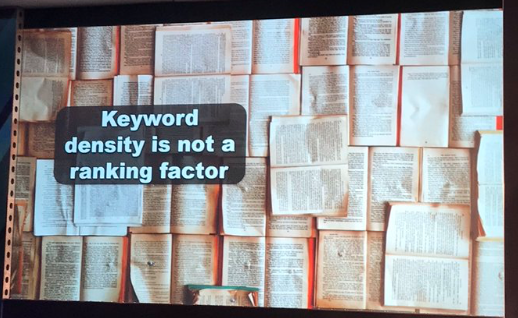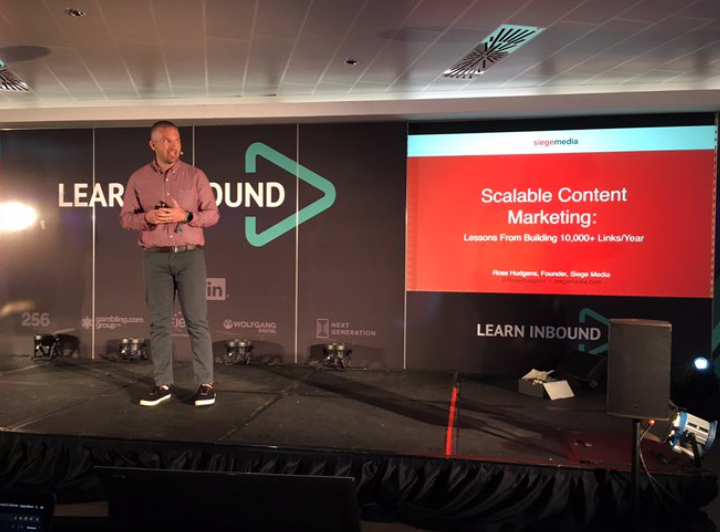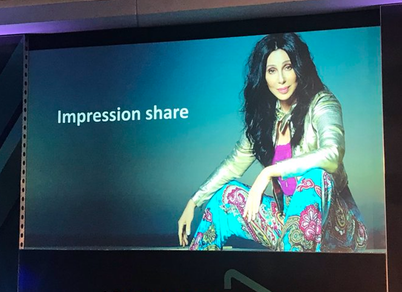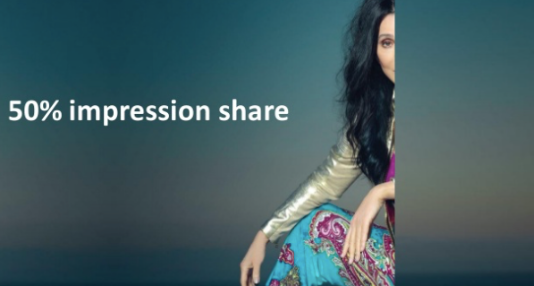It may have taken a week, but we have finally found the time to get pen to paper (or fingers to keyboards) to share all our thoughts and learnings from Learn Inbound – one of Ireland’s top marketing conferences.
On Thursday 15th and Friday 16 August GlowMetrics headed down to the Aviva Stadium in Dublin to join the cream of Ireland’s Marketing crop to network, drink coffee, share knowledge, (drink some more coffee) and listen to some top-class speakers who had been flown in from around the globe.
The amazing speakers covered a range of topics from new and interesting angles including Technical SEO, Google Shopping, Digital PR and Content Creation to name but a few.
Here are some of our highlights from both days at Learn Inbound 2019.
Day 1:
SEO is Dead Again? It Will Never Die
Speaker: Judith Lewis, DeCabbit Consultancy
This was the perfect talk to kick off Learn Inbound 2019. Judith dived into the SEO practices that matter most in 2019, in her own words she covered “the stuff you can ignore, the old stuff that works again and the new stuff that doesn’t work.” It was a 40-minute crash course in best practice SEO in 2019.

So, what did we learn?
Make sure you E-A-T.
Expertise. Authority. Trustworthiness. Since the so-called Medic update in August 2018 most SEO’s worth their salt will know all about the importance of EAT factors but Judith gives you some practical tips for improving your EAT score including referencing popular sites, citing professional memberships, mentioning formal awards, keeping your contact information up-to-date and making sure your About Us page fully (and honestly) describes what your organisation is about.
Oldies but Goodies
There’s lots of old stuff that still works in terms of SEO. Don’t forget about your HTML sitemaps, building a strong link profile, undertaking local SEO optimisation, optimising title tags, updating your Google My Business and having hyper-specific landing pages.

Mobile-First Indexing Is Happening – and It Matters!
It’s not a myth or rumour it’s happening now, and we have to change our SEO mindsets to match it. This means designing sites and content with the mobile user in mind. Focusing on ATF (above-the-fold) content that will load in under 1 second. This allows the user to begin interacting with your page ASAP while the rest of the page loads (hopefully quite quickly) in the background. Judith also gave us some top tools to test this including GTMetrix, Chrome Audit Tool and Google’s Page Speed Tool.
One last tip from Judith – keyword density is not a ranking factor. Neither is bounce rate. Time to focus on page dwell time.

Scalable Content Marketing: Lessons from Generating 5,000+ Links in 12 Months
Speaker: Ross Hudgens, Siege Media

Ross jetted in from San Diego, California to run through his top tips for generating links – and creating the type of content that people want to link to.
So, what did we learn?
It’s Not Just the Content – It’s The Design
It isn’t enough to have top content that answers your users’ most pertinent questions – it’s also got to look good. Throughout his talk, Ross discussed the value not of just creating create content suited to your organisation, industry and target market but of also making sure that design becomes a critical component of all content. When we create content that looks good, we lower the friction for people potentially linking to that content.
According to Ross “‘A great-looking site experience creates trust, and naturally improves organic link attraction.’
Great Design Attracts Great Designers
Ross recommends posting your work on Dribble. It’s a great space to share your work, connect with top designers and find some inspiration.
The Top 5 Linkable Asset Types
1. Top/middle funnel keyword-driven content that generates passive links
2. In-depth guides
3. Blog posts with shareable assets for other bloggers
4. Surveys/data studies for national news
5. Data studies/images for local news
Whatever You Do, Put Billboards in Manchester: Getting Brand Data from Google
For the first time at Learn Inbound, the final few talks were ten-minute lightning talks. We enjoyed these, and the speakers crammed a lot into just 10 minutes.
The pick of these lighting talks for us was Robin Lord from Distilled.
What Did We Learn?
Google Ads Data is sometimes Worth More than What You Pay for It
Robin shared a step-by-step guide for using Google Ads to find regional brand awareness data between your brand and competitors. Robin’s talk highlighted the benefit of using a small Google Ads budgets of less than €10 to pull through lots of valuable regional keyword data and shopping trends. Robin then recommended using these data insights to inform everything from content calendars, to outreach, online advertising and offline advertising (hence the Billboards in Manchester mention at a digital marketing conference.)
Robin won the GlowMetrics Slide of The Day
When this slide appeared on screen it metaphorically brought the house down – and the Learn Inbound Twitter feed went crazy.

Thanks Robin. We’ll never be able to think about Impression Share in the same way – or 50% Impression Share for that matter either.

Day 2:
The first leg of day 2 covered a range of exciting topics, and we have selected our favourites.
Keywords Are Not Enough: How To Uncover Content Ideas Worth Chasing.
Ross Simmons, Foundation Marketing
Ross came to the stage, ready to reveal the secret model that helps him capture the content his audience WANT to read. “Keyword research is not the only way’’. This was a phrase he used over and over again in his talk. He believes finding the communities our audiences live and engage in will help us get a better understanding of what content is most useful and valuable to them.
To seek this information, he revealed the 3-step model he uses to gain a more insightful look at what his audience wants!
- Research | Understand the audience you’re trying to connect with by studying the channels they are visiting.
- Rethink | Visit communities. Browse groups. Look at the SERPs. Rethink how you deliver content to your audience.
- Remix | Don’t steal ideas, get inspiration from it. Put your content in different forms.
We are inspired by Ross and his fresh way of thinking. He was a fantastic speaker and engaged the room packed with industry professionals.
The Lost Art Of Asking Questions
The user testing expert delivered a great talk “The Lost Art Of Asking Questions”. She spoke about the importance of asking the right question and provided excellent examples of qualitative and quantitative research techniques.
Els started with the difference between loaded and leading research questions. For example, a leading question is – “How great was this event.” This encourages the consumer to give a positive answer as the interviewer has led with a positive introduction. A loaded question would sound like “How would you rate this professional event.” This is presenting opinions as facts. Els made it clear to avoid these types of questions as the data you will receive will not be honest!
“‘Don’t think quantity think quality” Els also presented a range of survey examples in particular on-site surveys and pop up placements. One example she gave was that she was on a website and used the handy search bar to find the content she wanted to read, to then she was directed to a famous “We can’t find what you are looking for” page. As soon as this happened, a pop survey appeared asking “How would you rate our website” She laughed, but this really brought home how important the right place at the right time is!
Comedy-Inspired Copywriting Tips
Lianna Patch Punchline Conversion Copywriting
“If your copy doesn’t use humour, you’re not getting the results you deserve”.
Firstly, we laughed and not the quiet “oh that’s funny.’’ The belly laugh snorting funny! From start to finish, Lianna was not only hilarious but also very passionate about how to introduce comedy into your brand’s tone of voice and copy.
Why humour affects us
It makes us vulnerable! This is so true. Think back to when you have wanted to make a joke and didn’t because you didn’t want the embarrassment of silence?
Lianna touched on how work and corporate businesses are “serious” therefore humour or jokes have no place in marketing materials. She completely disregarded this statement with the below Meme.

Lianna further developed with this, she opened our minds and got us thinking. Yes, we are in a corporate industry, but does that mean we have to be less human when it comes to representing our brand/business?
A healthy blend of your humour and user humour will take you to the jackpot according to punchline copy. Their advice is to start small with humour, introduce it and get comfortable then you will find your voice.
To conclude…
From user research, copywriting and content strategies as topics, Learn Inbound killed it again this year by providing us with world-class industry speakers, talks and lots of laughs. We look forward to returning in 2020.
Browse by Category
- Social Media
- SEM
- SEO
- Google Ads
Digital Marketing
- Google Analytics
- Google Tag Manager
- Google Opimize
Digital Analytics

Optimise your website and marketing campaign performance with Ireland’s leading digital analytics agency
Sign up to our newsletterEnjoyed reading this article? Find more like it below…
Posted by
GlowMetrics
Nov 20th 2019
Placement blogs
2 min read
Meet Matthew | Work Experience Student
We are delighted to welcome work experience student Matthew to GlowMetrics! Matthew has been working in GlowMetrics for the past week, gaining industry experience of analytics and marketing. In his...

Posted by
Michael Wilson
Sep 14th 2017
3 min read
Google Analytics Certified Partner (GACP) Summit 2017 in San Francisco
The Google Analytics Certified Partner Summit 2017 took place in the Fairmont Hotel, San Francisco on the 30th and 31st August. We were there along with representatives from approximately 500 other GACP...

Posted by
Georgia Sloan
Oct 31st 2023
Company Updates
2 min read
Get to know Georgia!
Hi, I’m Georgia. I have recently joined the Glowmetrics team as a Digital Analytics Assistant. My journey into this role began with an undergraduate degree in microbiology, which led me...








Leave a Reply